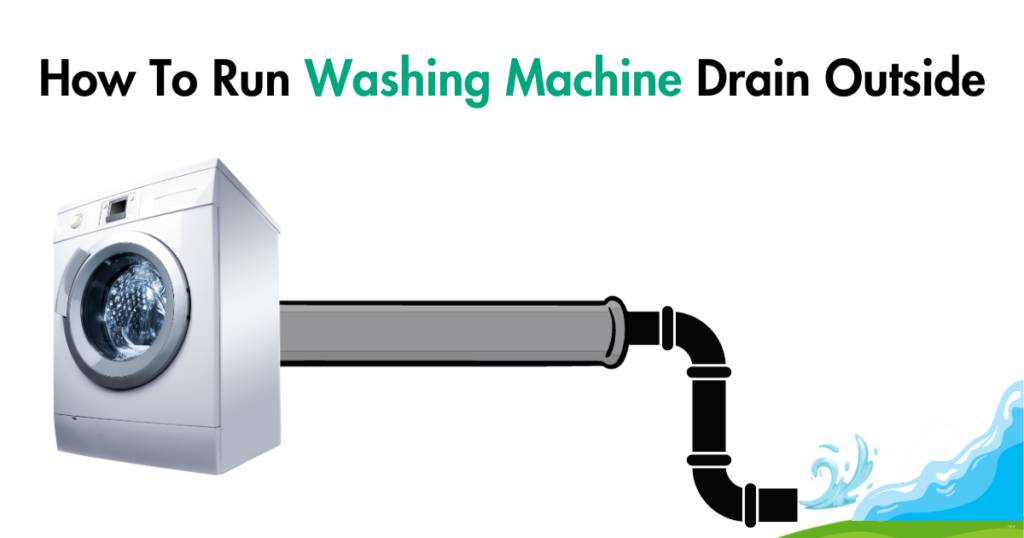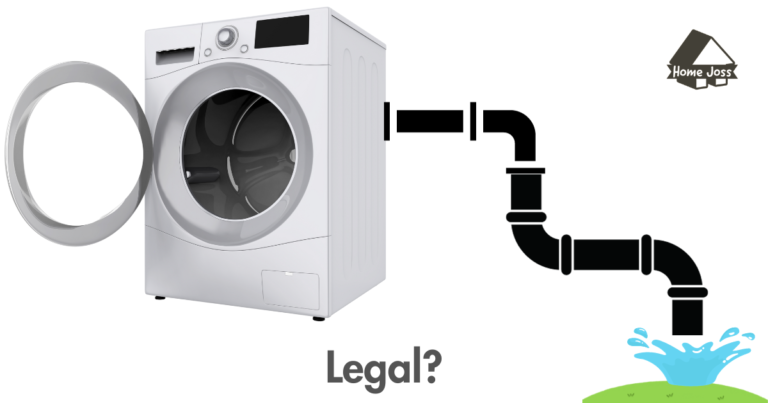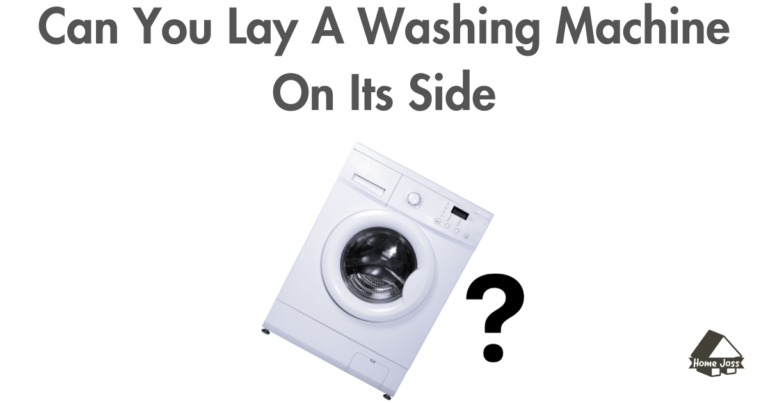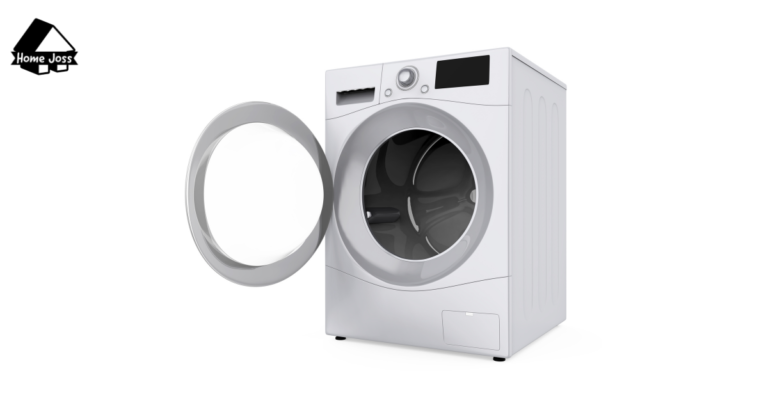To run a washing machine drain outside, replace the drainage pipe with a longer one that reaches the desired outdoor location. Make sure to follow local regulations and guidelines to ensure legality and prevent contamination of groundwater.
Why Installing A Washing Machine Drain Outside Is Beneficial
In some rural parts of the United States, it’s still common to see households draining their washing machine water outside, a practice known as “wildcat sewer.” However, this practice is illegal in most places, and neighbors can report it if they see wash water coming out of a house.
Draining washing machine water into the ground is environmentally harmful. It can contaminate groundwater, which is a major cause of pollution in wells and rivers. Only rainwater should be drained into soak pits in the ground, as all other wastewater can lead to contamination.
You may also need to know the answer of Is it legal to drain a washer outside?
The legality of draining washing machine water outside depends on local regulations. This water is considered “gray water,” different from sewage. In some cases, if you drain it on your property, it might be acceptable. However, concerns are raised about this practice, as it can deposit phosphates in the soil, similar to fertilizers and pesticides.
Regardless of these practices, the washing machine’s drain hose should be properly installed. It should feed into a utility sink, standpipe, or directly into a drain pipe, and must be securely attached to prevent leaks and spills.
Materials And Tools Needed

| Materials and Tools Needed |
|
Running a washing machine drain outside can be a convenient solution in certain situations. However, it is important to ensure that you follow the proper steps and have the necessary materials and tools. Start by gathering the required materials, including a drain pipe, pipe connectors, pipe cutter, pipe sealant, shovel, and level. Additionally, make sure you have a clear understanding of local regulations to ensure compliance.
Once you have the materials and tools, carefully plan the route for the drain pipe and dig a trench. Use the level to ensure proper slope for drainage. Cut the pipe to the required length and attach it to your washing machine drain outlet using the pipe connectors. Apply pipe sealant to prevent any leaks. Finally, backfill the trench and ensure that the pipe is securely in place.
It’s important to note that regulations regarding draining a washing machine outside can vary. In some areas, it may be allowed, while in others it may be illegal due to potential contamination of groundwater. Always check with local authorities and follow the necessary guidelines to avoid any legal issues.
Step-by-Step Guide to Install a Washing Machine Drain Outside
If you’re considering running your washing machine drain outside, there are several important factors to keep in mind:
- Consider the proximity to the washing machine to ensure a convenient setup.
- Ensure that the drain has a proper slope for effective drainage.
- Check local regulations for setback requirements to ensure compliance.
- The depth of the drain should be below the frost line to prevent freezing issues.
- Choose a width for the drain that accommodates the pipe and allows for backfill during installation.
- Connect pipe sections using connectors to create a seamless drain system.
- Use a pipe cutter to cut the pipe to the desired size.
- Securely attach the pipe to the wall or foundation to prevent movement or detachment.
- Apply pipe sealant to all joints for a watertight seal and to prevent leaks.
- Run a test with water through the washing machine to check for proper flow and drainage.
- Inspect the drain system for any leaks or issues that may need to be addressed.
- Use the excavated soil to fill the trench, and compact the soil to prevent settling.
- Consider using a drain cover to prevent debris from entering the drain pipe, which improves both aesthetics and safety.
Remember to always check with local authorities or a professional plumber to ensure compliance with local building codes and regulations.
Maintenance And Troubleshooting Tips
Regularly inspect the drain pipe for clogs or blockages. Clogs can occur due to lint, debris, or foreign objects getting trapped in the pipe, which can cause drainage issues. Blockages may occur if the pipe is not properly installed or if there is a buildup of sediment or mineral deposits. Clean the drain cover or grate to prevent buildup. Over time, dirt, hair, and other debris can accumulate on the cover or grate, obstructing the flow of water. Regular cleaning can help prevent clogs and ensure proper drainage. Check for any leaks or damage to the pipe. Inspect the pipe for cracks, leaks, or loose connections. Even a small leak can lead to water damage or mold growth. If any issues are found, it is important to address them promptly. Consult a professional if any issues persist. If you are unable to resolve the drainage problems or if you suspect there may be underlying issues with your washing machine drain, it is best to seek professional help. They can identify the cause of the problem and provide the necessary repairs or replacements. |
Frequently Asked Questions On How To Run Washing Machine Drain Outside?
Can You Run A Washing Machine Drain Outside?
Yes, it is possible to run a washing machine drain outside, but it may not be legal in many places. It is important to check local regulations before doing so to avoid any legal issues.
Can I Drain My Washer In My Yard?
No, you should not drain your washer in your yard. It can contaminate groundwater and is often illegal.
Can I Run My Washing Machine Water On The Ground?
Running your washing machine water on the ground is generally not recommended. It can contaminate the groundwater and is often illegal in many areas. Check your local regulations before draining the water outside.
Where Do You Run The Drain On A Washing Machine?
To run the drain on a washing machine, attach the drain hose to a nearby sink or a standpipe. Make sure the hose is bent downward into the sink or standpipe to prevent kinking.
Can You Run A Washing Machine Drain Outside?
Yes, you can run a washing machine drain outside, but it may be illegal in some areas.
Is It Legal To Drain A Washer Outside?
In most places, draining a washer outside is illegal due to the potential contamination of groundwater.
Can I Drain My Washer In My Yard?
No, you shouldn’t drain your washer in your yard as it can contaminate wells and rivers.
Can I Run My Washing Machine Water On The Ground?
It’s generally allowed to run washing machine water on your own property, but it’s important to consider local regulations and any potential environmental impacts.
To safely and legally run a washing machine drain outside, it is important to follow the correct procedures. While it may still be a common practice in some rural areas, in most places, it is illegal and could lead to contamination of water sources.
Instead of draining the water into the ground, it is recommended to use a proper drainage pipe that leads to a suitable location in your backyard. This helps to prevent any potential pollution and ensures that the water is properly disposed of.
When installing the drainage pipe, make sure to follow the instructions and guidelines provided by your washing machine manufacturer. By taking these steps, you can effectively and responsibly run your washing machine drain outside without any negative environmental impact.






